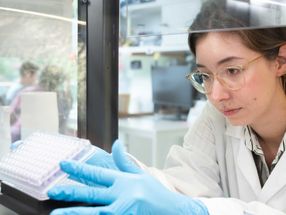Sebia partners with Inserm Transfert to develop a unique diagnostic test for haemoglobin diseases
Collaboration will focus mainly on the diagnosis of thalassaemias
Sebia announced that it has entered into partnership with Inserm (the French National Institute of Health and Medical Research) and Inserm Transfert, its private subsidiary responsible for marketing the outcomes of its scientific research, to develop and commercialize a unique biological test for measuring free alpha globin chains in beta-thalassaemic patients. The test will indicate the severity index of the disease in patients.
Negotiated by Inserm Transfert, the collaboration calls for Sebia to support the research carried out by Inserm, which will develop the test. In return, Sebia will have the possibility of acquiring exclusive rights to industrially develop and commercialize the test internationally.
The test for quantifying alpha globin chains was developed by unit U779 along with the participation of the research team of Professor Frédéric Galactéros, who heads the red blood cell genetic disease unit at the Henri Mondor Hospital within the Paris Public Hospital Authority. According to Prof. Galactéros, the test Sebia and Inserm Transfert will develop will fill a gap in orienting the diagnosis of thalassaemic patients, since existing methods are more laborious, more costly, and are exclusively intended for research laboratories. Thus, it should result in the commercialization of a new test that does not use radioactivity, will provide a better appreciation of patients’ phenotypes, and will be better adapted to the monitoring of treatment. Furthermore, it will be suitable on a routine basis and available to all laboratories.
A preliminary study of this test has been carried out on 54 subjects (consisting of 20 patients suffering from beta-thalassaemia, 6 patients with alpha-thalassaemia, and a 28-reference control group). The phenotypes of the different haemoglobins were studied using high-performance liquid chromatography (HPLC) methods. This technique ensures an accurate measurement of foetal haemoglobin (HbF) and HbA2, the percentage of which is an important element for the diagnosis of thalassaemias. “HPLC and capillary electrophoresis separation techniques are valuable tools for identifying or confirming the presence of abnormal haemoglobins,” explains Véronique Baudin-Creuza.
Most read news
Other news from the department business & finance

Get the analytics and lab tech industry in your inbox
By submitting this form you agree that LUMITOS AG will send you the newsletter(s) selected above by email. Your data will not be passed on to third parties. Your data will be stored and processed in accordance with our data protection regulations. LUMITOS may contact you by email for the purpose of advertising or market and opinion surveys. You can revoke your consent at any time without giving reasons to LUMITOS AG, Ernst-Augustin-Str. 2, 12489 Berlin, Germany or by e-mail at revoke@lumitos.com with effect for the future. In addition, each email contains a link to unsubscribe from the corresponding newsletter.





















































